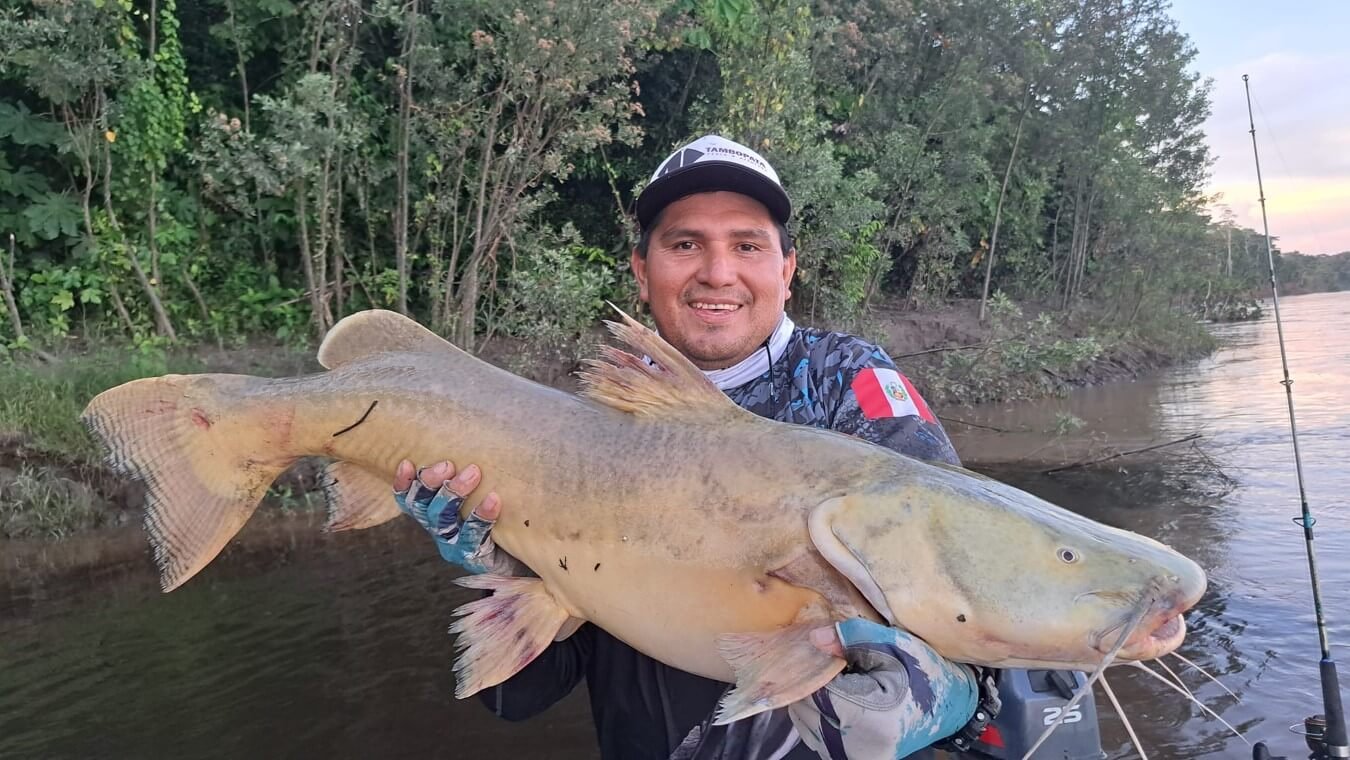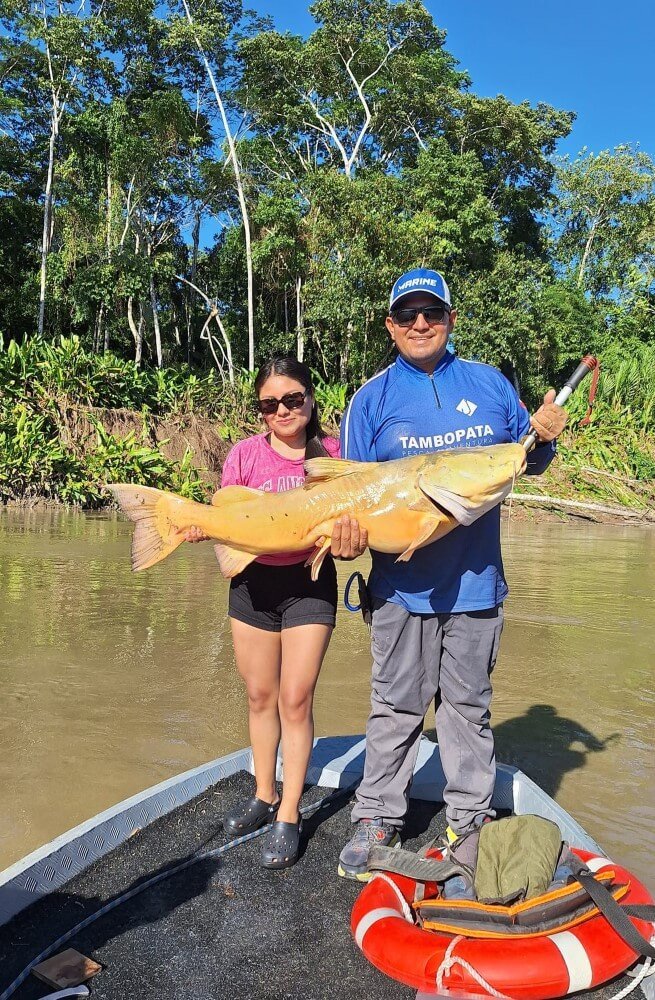Paiche aquaculture in Ecuador presents itself as an innovative and sustainable solution, especially in the Amazon region. Facing the challenge of preserving ecosystems while improving the local economy, this approach combines the traditional knowledge of indigenous communities with modern research to promote an efficient, low-impact production model. With attractive profit margins and growing interest from development and research institutions, paiche farming promises a future full of opportunities for the country.

This article explores in detail the key aspects of paiche farming, its natural feeding habits, the challenges faced by the aquaculture of this species in Ecuador, as well as the initial results from fish farming projects in the Ecuadorian Amazon.
Paiche (Arapaima Gigas)
The paiche, or Arapaima gigas, is the largest scaled fish in the Amazon basin and represents a valuable resource for aquaculture projects. With a natural distribution that spans several Amazonian provinces of Ecuador, such as Sucumbíos, Orellana, and Pastaza, this species has traditionally been used by local communities for self-consumption. In recent years, its potential has been identified as a sustainable option for fish farming due to its large size and rapid growth.
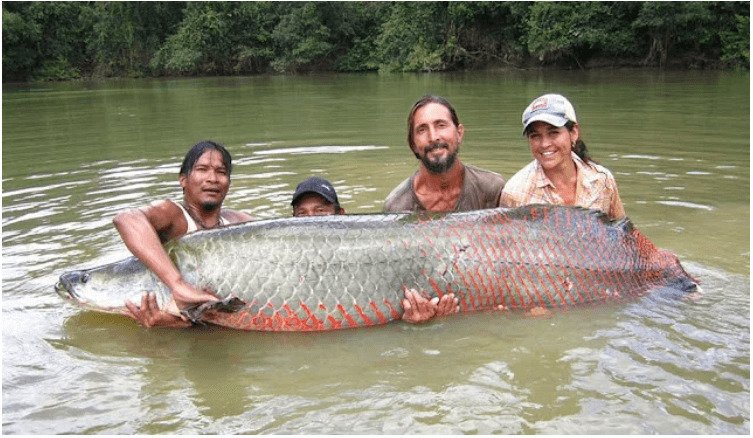
The paiche can reach impressive sizes, with lengths of up to three meters and weights of over 200 kilograms. Additionally, it has a lifespan of up to 50 years, making it an attractive species for both research and commercial exploitation. However, its farming in Ecuador is still in an experimental phase, with the involvement of research centers and private projects aiming to optimize farming techniques to maximize production without compromising local ecosystems.
Habitat and Farming Conditions
In its natural habitat, the paiche prefers warm, stagnant waters with low oxygen levels and moderately acidic pH. These characteristics make the Ecuadorian Amazon a suitable environment for its cultivation in controlled systems. Moreover, the paiche can breathe atmospheric air, allowing it to survive in environments where other fish cannot.
Paiche farming is based on its ability to adapt to different farming conditions. In aquaculture systems, it has been shown to grow rapidly with diets formulated from protein-rich feeds, making it a viable option for large-scale commercial production.
In terms of stocking density, paiche production is measured in kilograms of biomass per square meter, rather than the number of fish, due to its large size. Without external aeration, ponds can support up to 4 kg of biomass per square meter, a figure that increases significantly with aeration and water exchange systems.
Paiche Feeding in its Natural Environment
The paiche is an apex predator in its natural environment, meaning it feeds on a wide variety of species and contributes to ecological balance. Its diet varies according to its life stage and environmental conditions. In its youth, paiches feed primarily on insects, crustaceans, and small fish. As they grow, their diet focuses on larger prey, including other fish and some invertebrates.
This feeding behavior makes it a key species within its ecosystem, regulating prey populations and preventing the overexploitation of certain species. In some documented cases, cannibalism has been observed among paiches, especially in environments where food availability is limited.
Controlled Diet in Aquaculture
In the context of aquaculture, the paiche has proven adaptable to diets specifically formulated to maximize its growth in captivity. The feeds used typically contain a high protein content, between 40% and 45%, combined with ground fish and other balanced ingredients. This diet allows for accelerated growth and efficient production, contributing to the economic viability of its farming in the Amazon region.
However, it is crucial to ensure that production systems have proper feed management to avoid waste and deterioration of water quality in the ponds, as the paiche is a large species that requires substantial amounts of food.
The Promising Business of Paiche: Opportunities and Challenges in Aquaculture
Paiche aquaculture in Ecuador presents itself as a high-potential activity, both economically and socially. This species’ ability to adapt to controlled environments, its rapid growth, and the high demand for its meat in the market make paiche farming an interesting alternative for Amazonian communities and entrepreneurs interested in fish farming.
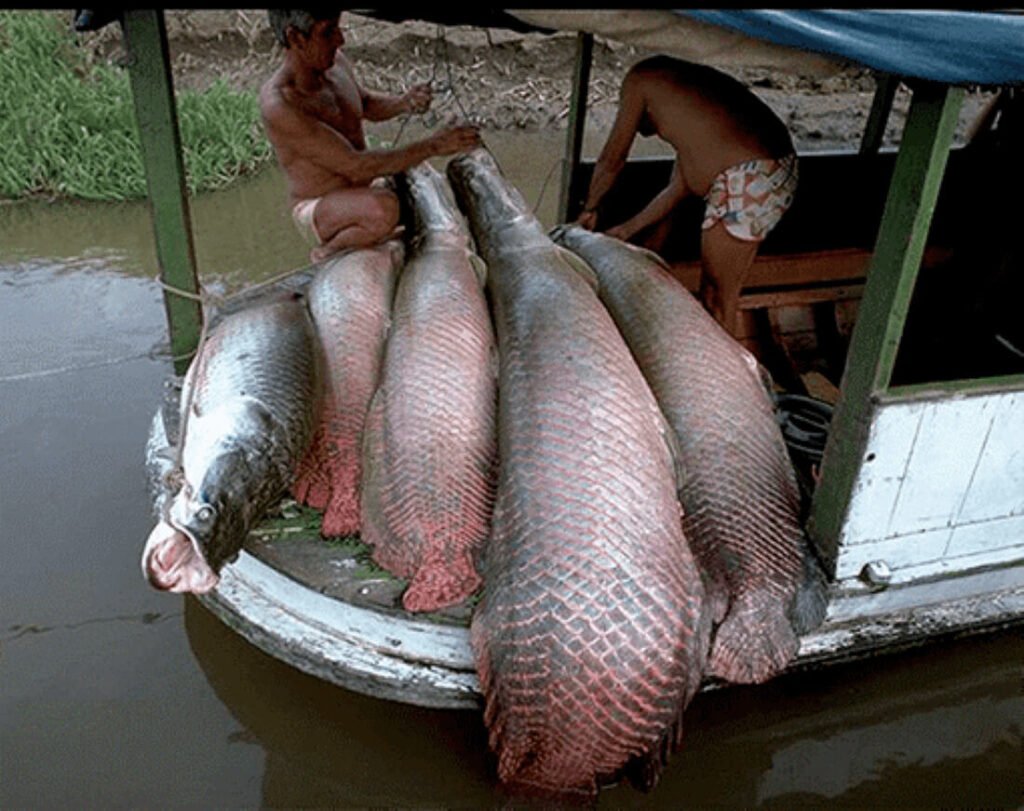
One of the main benefits of paiche farming is its economic potential. Although still in its early stages, interest in paiche farming in Ecuador is growing, driven in part by the attractive profit margins offered by the species. Additionally, paiche can contribute to food security in Amazonian regions by providing a high-quality protein source for local consumption.
Challenges in Production
Despite its potential, paiche aquaculture in Ecuador faces several significant challenges. The first is the infrastructure needed for large-scale farming. Cultivation ponds must be designed to support the large size of the fish and their need for optimal water quality. Moreover, the lack of specialized technical knowledge in many communities can limit the ability to efficiently manage paiche production.
Another major challenge is obtaining farming licenses. In Ecuador, the Ministry of the Environment has so far granted only two licenses for paiche farming and commercialization, which limits the number of producers who can participate in this market. However, it is expected that as interest in the species grows, regulations will be eased to facilitate the entry of new producers.
Initial Results
Despite receiving training and technical assistance, the first results of the project were disappointing due to the death of many of the fry, caused by a cold snap. However, the entrepreneurs did not give up. In August and September of the same year, they acquired 90 additional, larger fingerlings, of which 60 survived. This initial setback did not discourage the association, which continued to move forward with determination in its paiche aquaculture project.
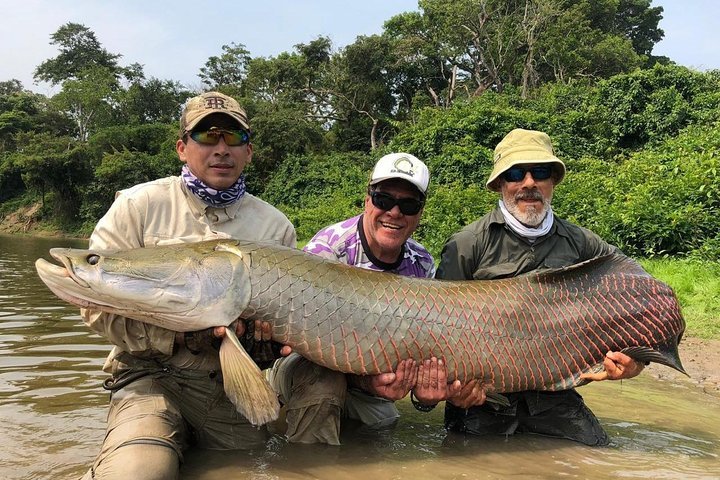
You may be interested in …
Sport Fishing in Tambopata Amazon 3 days
MORE INFORMATION HERE



